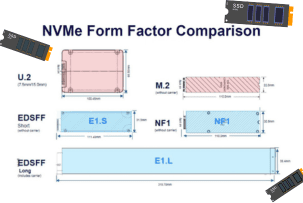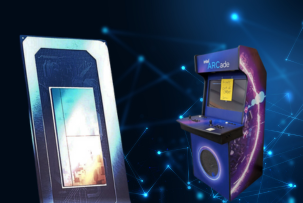Embracing the Advancements of Wi-Fi 7 in our Networking and Security Series
09:37, 10.01.2024
Wi-Fi appeared as a method of wireless connection in 1997, and since then the technology has greatly changed. Users want to get more reliable, and faster variants for Internet connection. One of the latest versions is Wi-Fi 7. This new version offers higher performance characteristics so that it will be an ideal option for public transport.
A New Era in Wireless Networking: Wi-Fi 7 Unveiled
The major benefit of Wi-Fi 7 is increased performance which makes it a perfect solution for public transport onboard systems and connected passengers. If you are interested in the technical characteristics of Wi-Fi 7 then you can find all the needed information in the article.
Generally speaking, Wi-Fi 7 offers access to the 4.8x increased speed, lower latency, almost doubled the max bandwidth, and 20 percent higher data transmission.
Understanding the Core Features of Wi-Fi 7
Passengers of public transport will definitely experience a better experience with Wi-Fi 7. It will be noticed through the seamless connection, faster streaming, quicker downloads, improved downloads, and even high quality of the video conferences. Let’s discuss Wi-Fi 7 major characteristics in detail.
Exploring Wider Channel Bandwidth
The popularity of Wi-Fi 7 is in the doubled bandwidth. When comparing with the 2 previous versions, it is possible to use 320 MHz channels on the dedicated 6 GHz band.
Every band is divided into channels. For instance, the 2.4 GHz band includes eleven channels and each of them can have 20 MHz. As for 5 band, it includes 45 channels and they can be combined and create 80 or 40 MHz instead of 20. The 6 band includes 60 channels and the previous Wi-Fi generation offers 160 MHz wide. With Wi-Fi 7 this standard is doubled and that definitely influences the speed.
If discussing this characteristic more visually understandable, then the channels are responsible for carrying a higher quantity of information at the same time. Wi-Fi 7 can carry more information at a specific time period which means that this data can get to the needed destination way quicker.
Unraveling the Power of Multi-Link Operation
Wi-Fi 7 has a new feature MLO (or Multi-Link Operation), previous Wi-Fi versions don’t have it. That means all the other generations have a single-band connection. With MLO users can now enjoy lower latency and higher speed. This feature functions by immediately receiving/sending information via various channels.
If speaking about the other generations of Wi-Fi, all the earlier versions have one band connection. Even 6E works by connecting 2 devices on one band. The process in the earlier generations functions by choosing which band is better to connect, and there are such variants as 6 GHz, 2.4 GHz, or 5 GHz.
Wi-Fi 7 device is connected to the router across several channels using various bands and this process is simultaneous. MLO functions by switching on the wider channels that are responsible for sending more data. So that traffic could be sent on really high and superhigh speed at the same time.
Of course, speed is an important characteristic, but it is not the major priority because performance is really crucial. Wi-Fi 7 influences the router's functioning in such a way that interference and congestion are considered in order to create the most flawless transmitting and low latency.
Enhancing Efficiency with Preamble Puncturing
Preamble puncturing helps with efficiency because it helps to use wider channels in such environments as public transport.
Before the usage of preamble puncturing, the channels with interference will quickly become unavailable for the users. This helps to improve network capacity by ignoring this part with interference.
Wi-Fi 7's Transformative Advantages in Public Transport
Now you know the major changes in the Wi-Fi 7, how these changes can influence the passengers’ experience in public transport? Let’s discuss some of the advantages that people can actually experience.
Elevating Performance in High-Density Environments
Public transport is a place where a huge number of users are trying to connect simultaneously and that creates some additional challenges to the system.
The previous Wi-Fi versions had some limiting factors that could not offer high performance in a crowded environment. With the appearance of Wi-Fi 7, new features and functions have greatly changed the situation and increased the performance.
Here are the main factors that helped to elevate performance in high-density environments:
- Multi-link Operation or MLO helped to lessen the latency level and at the same time increased network redundancy and reliability. This became possible because data is now sent simultaneously across different channels.
- Wider bandwidth directly influences the stability of the performance. More devices can be located on one channel and the higher capacity of the channel lessens interference and congestion.
- With 4K QAM implementation, it became possible to get a better rate of data transmission. This is extremely necessary for better performance in public transport with a large number of users.
- Preamble puncturing is responsible for the higher spectrum in the environment with interference.
Lightning-Fast Speeds for Passengers and Onboard Systems
According to the characteristics, Wi-Fi 7 can theoretically provide a speed of 46 Gbps. It is considered to be a huge improvement if compared with the previous version which provides only 9.6 Gbps. That is possible due to the same characteristics which we have already discussed, which are the following:
- 4K QAM. The increased data transmission leads to quicker data transfer to the passengers who are connected on public transport. Wi-Fi 7 works by encoding more data into every signal.
- The increased standard of Wi-Fi 7 channel bandwidth guarantees the upload speeds and quicker download. It is possible to transmit more data during a certain time period.
- Preamble puncturing highly increases the capacity of the users and usability spectrum in general.
- MLO is crucial for faster speed of internet connection. This is possible by simultaneous receiving/sending data over several bands.
Harnessing the Potential of Next-Generation Technology
Next-generation hardware is used in Wi-Fi 7 version which is the best possible connectivity solution that exists right now, and an awesome foundation for further development of internet technologies. The hardware that is used in Wi-Fi 7 is called Icomera A2 access point.
With the adoption of the new standard and mechanisms in Wi-Fi 7, internet usage in public transport has started a new curve of the developmental process. Now users can access reliable and extremely fast internet connections. At the same time, there was created a new approach towards quicker functioning of the data-intensive apps that are available right now, and those which are still testing out.
It is most likely that Wi-Fi 7 is an awesome version that will function for many years because of its new approaches and used technologies. This generation of Wi-Fi was designed due to the market demands, but at the same time, lots of possible future changes were taken into consideration so it will be a functional investment for a long period of time.
The recent version of Wi-Fi 7 is compatible with the earlier generations of this technology. In such a way, it is possible to cater to all the devices so that users will get the best possible connection while being on public transport.


